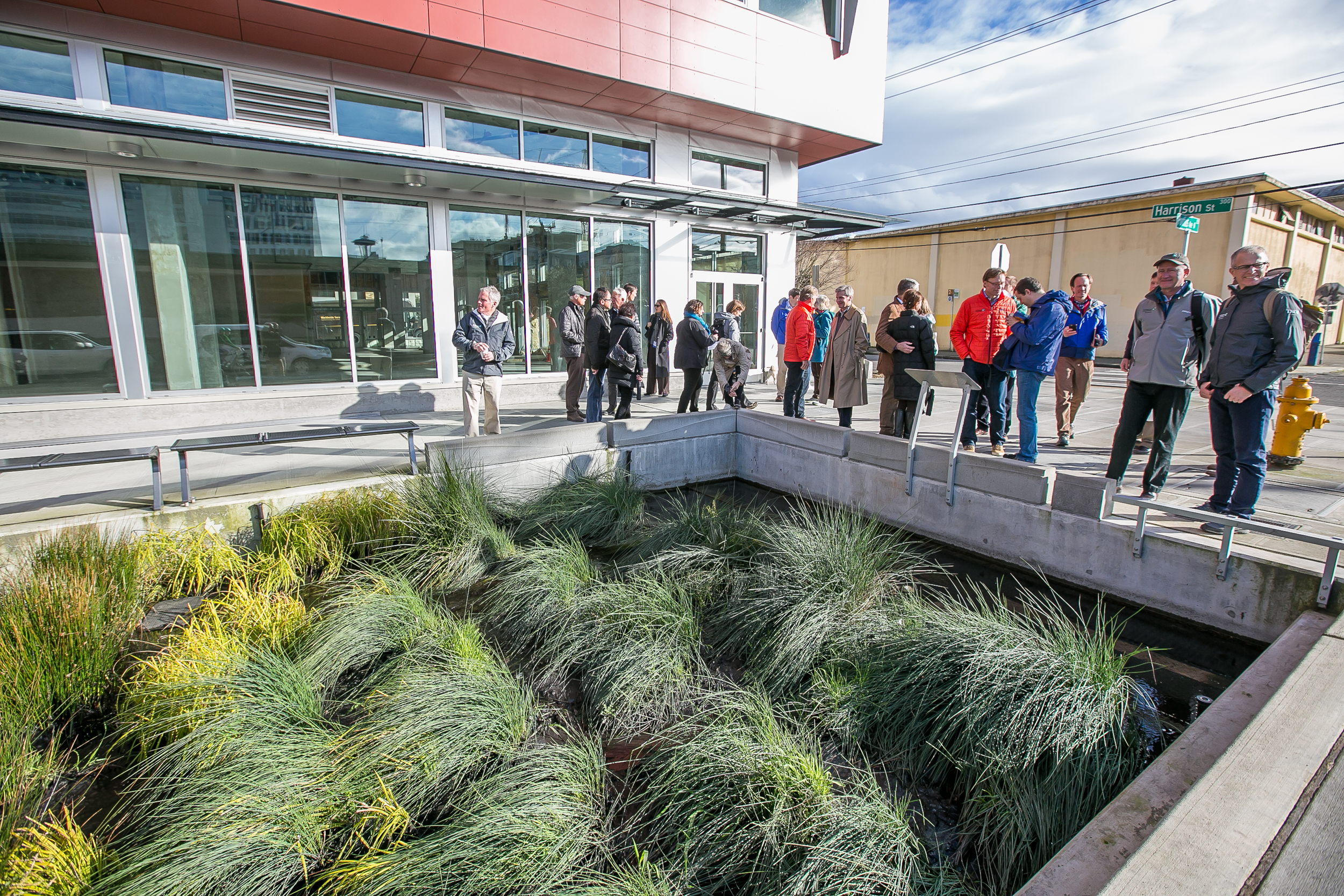The Stormwater Heatmap harnesses the power of big data to model where stormwater pollution is generated across the landscape — helping public municipalities plan for the future. As a living tool continually updated with the latest data, it’ll be exciting to see how communities, academics, and policymakers can use this to create lasting impact.
Puget Sound – It’s Time to Tackle Stormwater

Green Infrastructure Summit Brings Leaders together for Innovative Natural Solution
Written by Jeanine Stewart, Volunteer
Photographed by Paul Brown, Northwest Photographer
Infographics by Erica Simek Sloniker, Visual Communications
Stormwater sneaks up on the Seattle region so innocently, as rain droplets falling through the misty air. Yet when it hits the ground, it picks up bacteria from lawn fertilizers, copper from break pad deposits, oil and other pollutants that become deadly to salmon and Orcas in Puget Sound.
The Washington Department of Ecology calls it the biggest water pollution problem in the entire state, and yet lacks a comprehensive plan to tackle the problem.
That’s why the annual Green Infrastructure Summit each February is so exciting. This event, co-hosted by The Nature Conservancy, brings together key stakeholders to begin a discussion that will lead to collaboration for years to come.
Here, government, non-profit, business and research organizations will share what they’ve done already. There have been some great strides made. Green infrastructure such as rain gardens, which keep stormwater from trickling into places it doesn’t belong, have been installed around the city. However, there simply aren’t enough of them.
“We have to move beyond projects that are just another cute street, to tackle this problem on a scale thatwill make a difference to all of Puget Sound,” said Jessie Israel, Puget Sound Conservation Director for the Conservancy.
Stormwater pollutes the marine environment, leaving devastating impacts in its wake. A study flagged up by the Seattle Times recently said stormwater runoff can kill adult fish in as little as 2.5 hours. (Watch the Conservancy's video on this extraordinary research)
Stats like these are why The Nature Conservancy has laid out big goals for tackling this problem. In five years, here’s what we want to see:
- 1 billion gallons of stormwater treated using green infrastructure
- 1 million trees planted or maintained to impact freshwater quality, sequester carbon and benefit underserved communities
- 20,000 new raingardens in private spaces
- Green spaces created and enhanced in ways that better quality of life
- Cross sector, issue, and jurisdictional leaders deploy effective leadership and focus investments in green stormwater infrastructure
LEARN MORE ABOUT OUR WORK IN CITIES
Clean Water for People and Nature
Story by Rebecca Cohen, Proposal Writer
Photograph by Mark Godfrey
Clean water to drink; beautiful mountain rivers and lakesfor fishing and recreation; healthy and abundant water for growing crops. Washington’s waters are integral to our quality of live.
All across Washington, your support enables The Nature Conservancy to protect and preserve the water that sustains us all.
In Puget Sound’s river valleys, we’re leading an initiative to protect communities from flooding, improve water quality and create habitat for salmon. The result is cleaner water flowing into the Sound, protecting shellfish, salmon, orcas and the quality of life we enjoy in Western Washington. This model program has now been adopted by the state Department of Ecology, which has identified more than 20 new projects across the state for Legislative funding.
The rivers that provide fresh water along the Washington Coast are equally threatened. We’re working with tribes and other partners for restoration in the forests that protect the Queets, Clearwater and Hoh rivers, to ensure that they continue to flow with clean and cold water for salmon.
Our recent Forests for Our Future acquisition of 48,000 acres east of Snoqualmie Pass protects the headwaters of the Yakima River, which supports salmon and one of our nation’s most productive agricultural regions. We’re also working with a broad coalition that includes tribes, farmers, conservationists and others to support the Yakima Basin Integrated Water Plan to ensure there’s enough water for fish, agriculture and communities long into the future.
Together we can ensure this vital resource will continue to support life in Washington and around the world.























